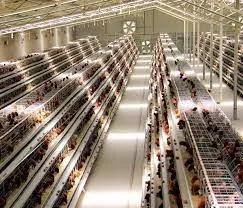Efficient Vacuum Sealing Solutions for Plastic Packaging Machines and Their Applications
Dec . 18, 2024 08:19 Back to list
Efficient Vacuum Sealing Solutions for Plastic Packaging Machines and Their Applications
The Evolution and Impact of Vacuum Plastic Packaging Machines
In the world of packaging, the vacuum plastic packaging machine has revolutionized how products are stored and transported. This technology, which removes air from packaging to preserve the quality and extend the shelf life of food and other products, has become crucial across various industries. The following discussion explores the evolution, functionality, and benefits of vacuum plastic packaging machines, along with their impact on the economy and consumer behavior.
Evolution of Vacuum Packaging Technology
The concept of vacuum packaging can be traced back to the early 20th century when innovative methods were developed to extend the freshness of food products. However, it wasn’t until the post-World War II era that significant advances in technology led to the development of modern vacuum packaging machines. These machines automated the process, making it more accessible and efficient for food manufacturers and suppliers.
In the past, vacuum packing was a labor-intensive process requiring significant manual effort. Advances in materials technology—such as the development of durable, flexible plastics—have enhanced the capability of vacuum packaging machines, enabling them to cater to a broader range of products, from fresh produce to medical devices. Today, these machines come equipped with state-of-the-art sensors and programming to optimize the vacuuming and sealing process, ensuring consistency and reliability.
How Vacuum Plastic Packaging Machines Work
Vacuum plastic packaging machines operate by removing air from the packaging and sealing it tightly. The process typically involves placing the product within a plastic bag or container, which is then inserted into the machine. The machine pulls out the air to create a vacuum, significantly reducing the presence of oxygen that can lead to spoilage. After the air is removed, the machine seals the package hermetically, preventing external contaminants from entering.
The efficiency and effectiveness of these machines vary depending on the design and technology utilized. Some machines are designed for high-volume production in industrial settings, while others are compact and ideal for small businesses and home use. Some advanced models include features such as programmable options and multiple sealing settings tailored to different types of food products, ensuring optimal preservation.
Benefits of Vacuum Plastic Packaging
vacuum plastic packaging machine

The benefits of vacuum packaging are manifold. Firstly, it significantly extends shelf life by preventing the oxidation of food products. This is particularly important in the food industry, where spoilage can lead to substantial financial losses. By keeping air and moisture out, vacuum packaging preserves freshness, color, and nutritional value.
Secondly, vacuum packaging saves space. Without the bulky air pockets found in traditional packaging, products can be stored more efficiently. This not only allows for better inventory management and maximized storage in warehouses and shelves but also reduces transport costs, as more items can be shipped at once.
Additionally, such packaging enhances food safety. The airtight seal reduces the risk of contamination from pests and bacteria, making it a preferred method for preserving meats, cheeses, and other perishables. Furthermore, the aesthetic appeal of vacuum packaging often leads to increased consumer interest and sales.
Impact on the Economy and Consumer Behavior
The rise of vacuum plastic packaging has had lasting effects on both the economy and consumer behavior. For businesses, the efficiency of vacuum sealing means lower operational costs and reduced waste, which translates into higher profit margins. Moreover, the extended shelf life promotes sustainability by minimizing food waste, aligning with increasing consumer demand for eco-friendly practices.
Consumer behavior has also shifted as more buyers look for longer-lasting products. The visual appeal of vacuum-packed items, often viewed as fresh and premium, influences purchasing decisions. Moreover, with the growth of e-commerce, vacuum packaging has become a preferred choice for shipping perishable goods, ensuring that items arrive at their destination in pristine condition.
Conclusion
In conclusion, vacuum plastic packaging machines represent a significant advancement in packaging technology, offering numerous benefits that enhance food preservation, reduce waste, and streamline logistical processes. As consumer demand for fresh, safe, and sustainable products continues to rise, the importance of vacuum packaging will only grow. This evolution not only helps businesses thrive but also contributes to a more efficient and environmentally conscious approach to packaging and food supply. The future of vacuum plastic packaging is bright, and its impact will undoubtedly resonate through various sectors for years to come.
-
Hot Sale 24 & 18 Door Rabbit Cages - Premium Breeding Solutions
NewsJul.25,2025
-
Automatic Feeding Line System Pan Feeder Nipple Drinker - Anping County Yize Metal Products Co., Ltd.
NewsJul.21,2025
-
Automatic Feeding Line System Pan Feeder Nipple Drinker - Anping County Yize Metal Products Co., Ltd.
NewsJul.21,2025
-
Automatic Feeding Line System - Anping Yize | Precision & Nipple
NewsJul.21,2025
-
Automatic Feeding Line System - Anping Yize | Precision & Nipple
NewsJul.21,2025
-
Automatic Feeding Line System-Anping County Yize Metal Products Co., Ltd.|Efficient Feed Distribution&Customized Animal Farming Solutions
NewsJul.21,2025






